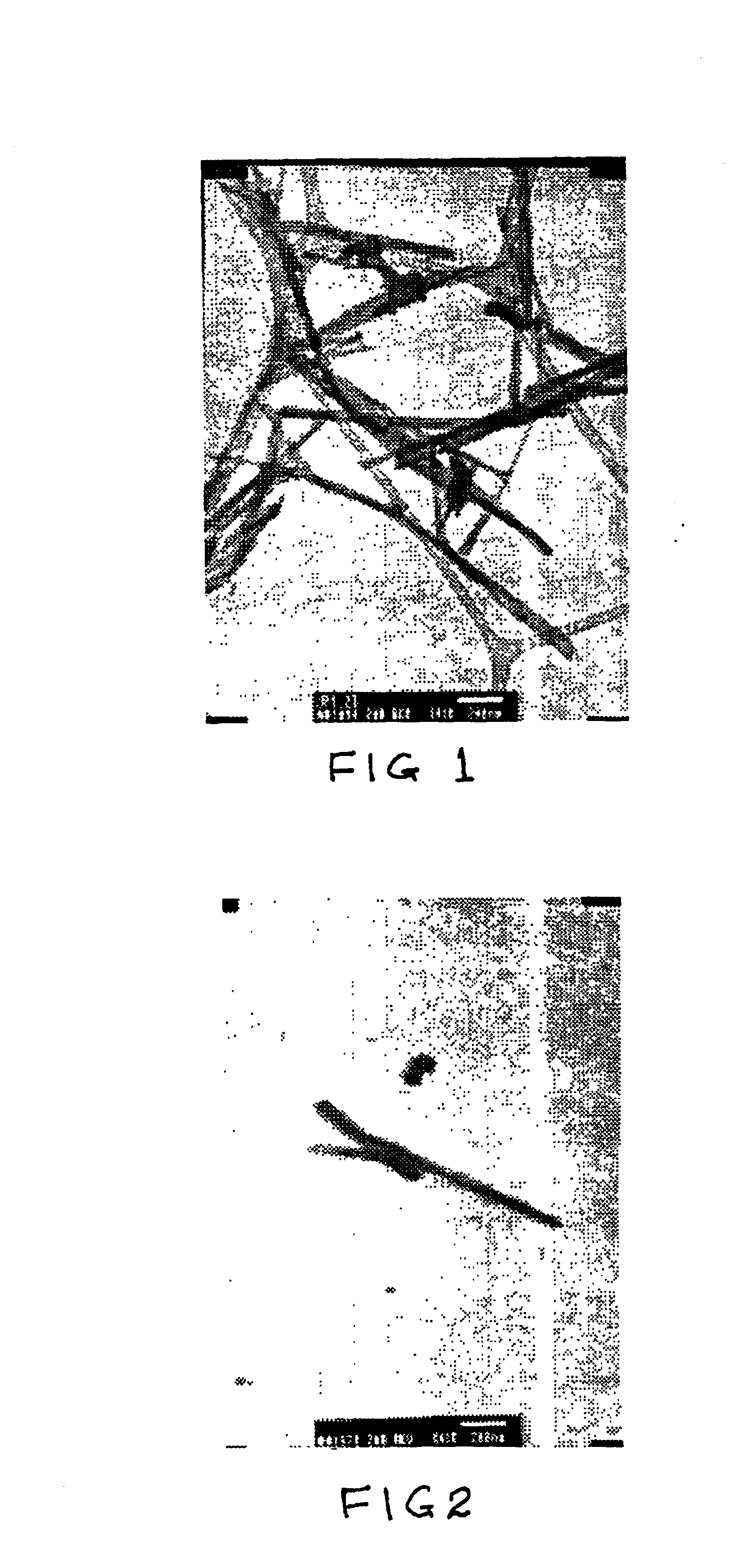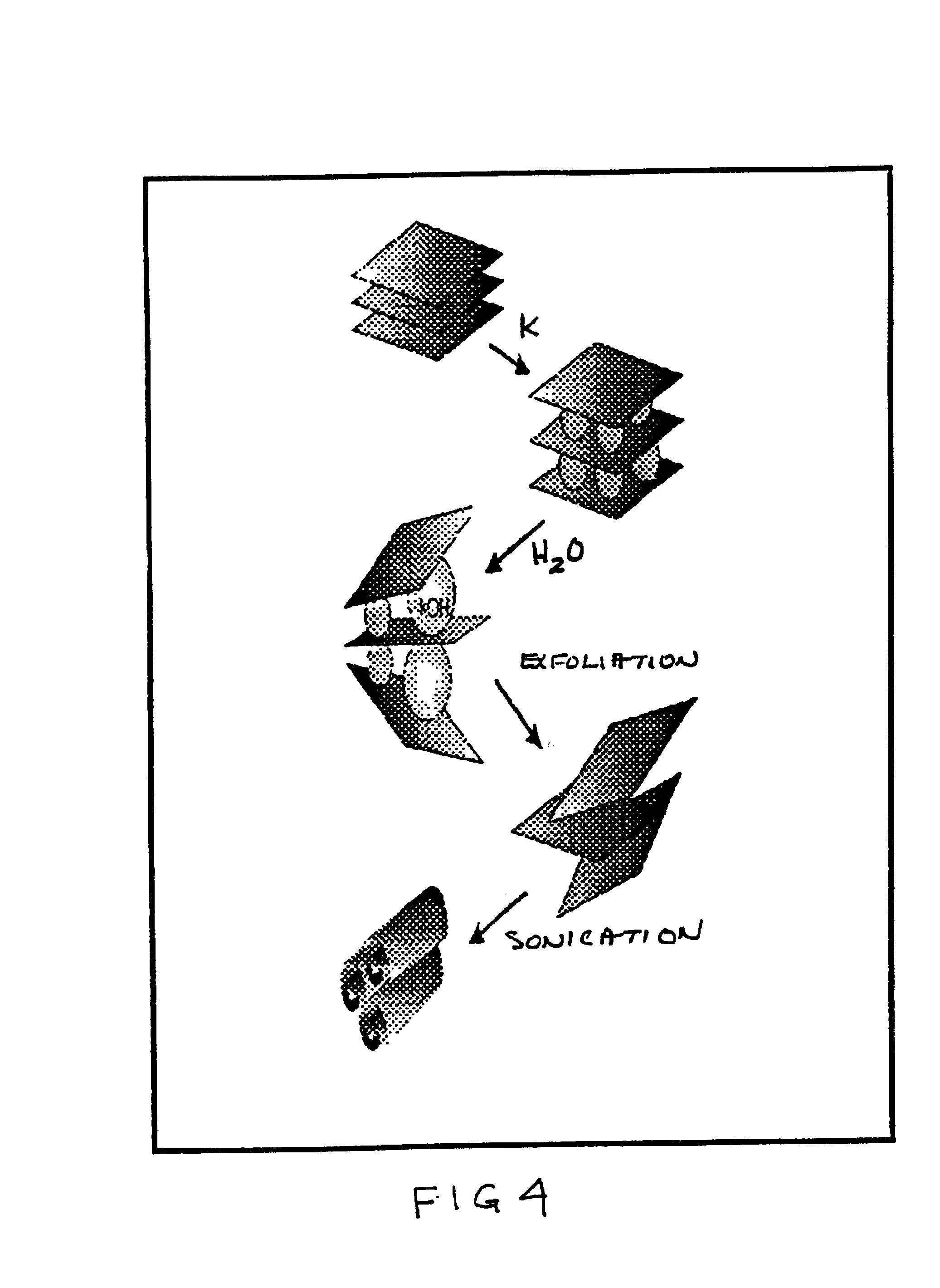Chemical manufacture of nanostructured materials
- Summary
- Abstract
- Description
- Claims
- Application Information
AI Technical Summary
Benefits of technology
Problems solved by technology
Method used
Image
Examples
Embodiment Construction
Synthesis of Bismuth Telluride and Bismuth Selenide Nanorods—Bismuth selenide and bismuth telluride are layered materials composed of five atom thick anion-metal-anion-metal-anion sheets held together by weak van der Waals forces. N-type selenium doped bismuth telluride and p-type antimony doped bismuth telluride have among the highest thermoelectric figures of merit known at room temperature and are used in solid-state thermoelectric refrigerators. In principle, low-dimensionally ordered forms of these materials could possess enhanced thermoelectric properties (Hicks, L. D., Dresselhaus, M. S. “Effect Of Quantum-Well Structures On The Thermoelectric Figure Of Merit”, Phys. Rev. B, 47, pp 12727-12731 (1993)). We have demonstrated that the reducing power of solvated electrons created when lithium is dissolved in liquid ammonia is capable of completely intercalating bismuth telluride and its n-type and p-type relatives with lithium (Ding, Z.; Viculis, L.; Cronin, S.; Koga, T.; Dressel...
PUM
 Login to View More
Login to View More Abstract
Description
Claims
Application Information
 Login to View More
Login to View More - R&D
- Intellectual Property
- Life Sciences
- Materials
- Tech Scout
- Unparalleled Data Quality
- Higher Quality Content
- 60% Fewer Hallucinations
Browse by: Latest US Patents, China's latest patents, Technical Efficacy Thesaurus, Application Domain, Technology Topic, Popular Technical Reports.
© 2025 PatSnap. All rights reserved.Legal|Privacy policy|Modern Slavery Act Transparency Statement|Sitemap|About US| Contact US: help@patsnap.com



